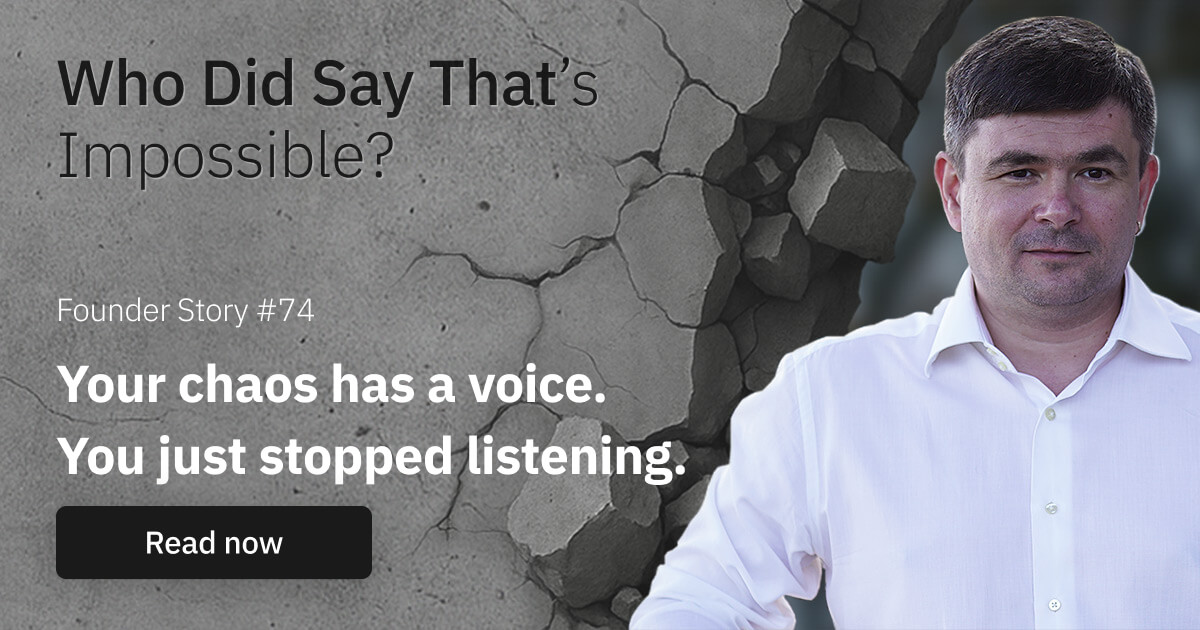The rise of the New Age Solopreneur—your chance to beat the corporations.
Or, a minute of boring calculations you can’t skip if you want to thrive.
Describing a business in terms of processes and systems isn’t technically hard.
But it’s incredibly time-consuming—especially for large businesses with various departments and interconnected tasks.
Production, marketing, HR, logistics—all these need to align as efficiently as possible to avoid information loss, delays, and friction.
Why?
Because this directly impacts profitability, increases risks, and reduces both control and transparency.
Add a complex production chain to the mix, and the challenge becomes even greater.
That’s where BPMN comes in—a modeling standard for process design.
There are consulting firms specializing in creating, implementing, and optimizing such processes.
But what about small business owners or solopreneurs?
With AI, what used to take weeks of analysis can now be done in days, depending on the business size and number of processes.
For solopreneurs or small business owners, complexity is unnecessary.
In fact, simplicity is key—processes should be as clear as possible.
Being a solopreneur doesn’t mean doing everything yourself. You’ll likely work with contractors, freelancers, and assistants.
To coordinate their work—and provide excellent client service—you need processes and systems.
The goal of scaling a business is to increase inputs (clients and resources) while delivering greater outputs (results) without compromising quality.
Processes help:
- Minimize human error.
- Standardize operations.
- Free up team resources.
They also prevent you from reinventing the wheel every time, allowing you to focus on marketing, client acquisition, and production.
Plus, they provide a system that can handle growth.
A decade ago, scaling often meant hiring more employees.
Scaling means delegation. It’s the ability to handle more work within the same time frame.
This approach had its drawbacks:
- Onboarding and training new hires.
- Regularly retraining staff as processes evolved.
A large team brings additional challenges:
- Required significant resources for maintenance.
- Hiring needed to be planned ahead of growth.
Side note:
Experts estimate that firing and replacing an employee costs at least the equivalent of three months’ salary.
And that’s fine if it’s a clerk. But what if it’s a top-level specialist? Or a key figure in your business?
By the way, processes and a knowledge base reduce a business’s dependence on any single individual.
This is a critical step in risk management.
And that’s not all.
The traditional approach of growing through hiring didn’t allow entrepreneurs to intentionally stay small.
In such cases, they were doomed to low income.
Their lives were barely different from regular employment, except there were no perks, bonuses, or guaranteed vacations.
Instead, they faced burnout, stress, and health issues as "extras.”
Today, technology has made process automation accessible not just to big corporations but also to small businesses and solopreneurs.
At your disposal:
- Process diagrams (STORY 18)
- Checklists and guidelines (STORY 19)
- Guidance on implementing processes with your team to ensure understanding of their importance (STORY 20)
Now, the "small" task (kidding): putting it all together into one cohesive system.
These are no longer isolated elements but an interconnected system that can grow alongside your business.
Scaling processes means automating them.
Transferring them to services integrated with automation platforms allows data to flow seamlessly and triggers the next steps automatically—whether it’s delivering tasks to an employee or being processed by AI.
This requires a toolkit that combines what you’re already using in your business with some additional tools.
The priority?
Automation tools like Zapier, Make, or n8n.
Each platform differs in terms of features and complexity.
Most tasks can be implemented even by non-technical users.
However, challenges may arise when integrating exotic services or creating complex workflows.
One important thing to remember—choosing a platform is a long-term decision.
Zapier is the easiest for non-specialists, with a vast array of modules.But it’s also the most expensive.
As your processes grow or your business scales, the costs can quickly skyrocket.Switching to another platform later will be painful.
In my opinion, Make is the best choice today.
It’s flexible, reasonably priced (remember, most other services will also have costs), and far easier to grasp than something like n8n.
However, it is a bit harder for beginners compared to Zapier.
Start automating processes that:
- Rarely change.
- Take up a lot of time.
- Are routine and don’t require complex decision-making.
These are the best candidates for automation.
Examples (not a complete list, but a good place to start):
- Initial processing of applications.
- Handling incoming payments and issuing invoices.
- Sending notifications, both internally and to clients.
- Publishing marketing materials online.
- Onboarding clients and employees.
- Managing projects and tasks.
It’s important to remember that automation doesn’t mean processes can be left unattended.
As always, it’s not that simple:
- Services are constantly evolving.
- There can be high loads or downtime.
- During peak periods, budgets need close monitoring.
AI and automation can make mistakes, so having backup plans is crucial.
Critical business processes should always remain under control.
Even so, automation is far more efficient, faster, and cheaper than doing everything manually.
It’s definitely a step in the right direction.
Reclaiming your freedom.
Disclaimer.
Every business has its nuances, and every founder has their unique context and resources. Whether or not my advice applies depends on your situation, experience, and needs. But one thing is universal—use your brain.
Think about how to apply the advice in your context before acting.
Your way.
- Eugene
Join the “most offbeat” Businessletter on entrepreneurship.

Hi, I’m Eugene.
Over the past 20+ years, I’ve grown an international agency from one-person freelance to a multimillion-dollar business. I’ve led teams, scaled systems, burned out, rebuilt, and learned (the hard way) what it really takes to run a business that doesn’t consume your life.
I help them make sense of complexity, design simple systems, and create the kind of business they actually want to run.
More Stories
Founder Stories

Your chaos has a voice. You just stopped listening
Or minute of realizing it’s not about broken communication

The growth you chase is your sentence
Or minute of realizing that not all growth is progress


